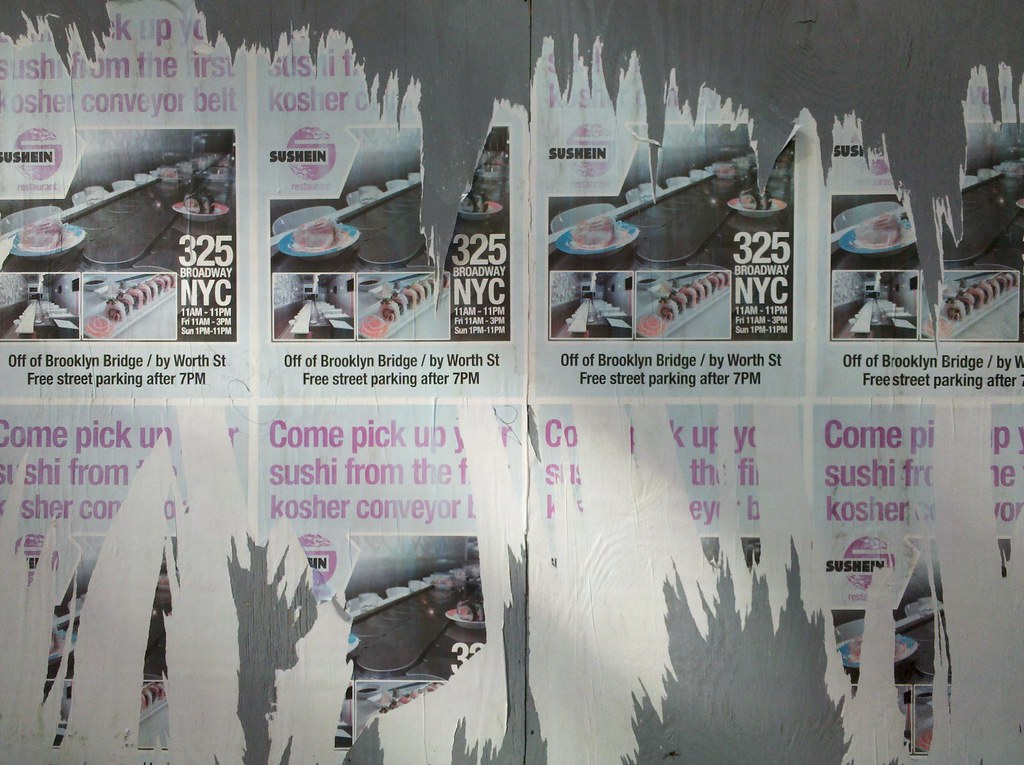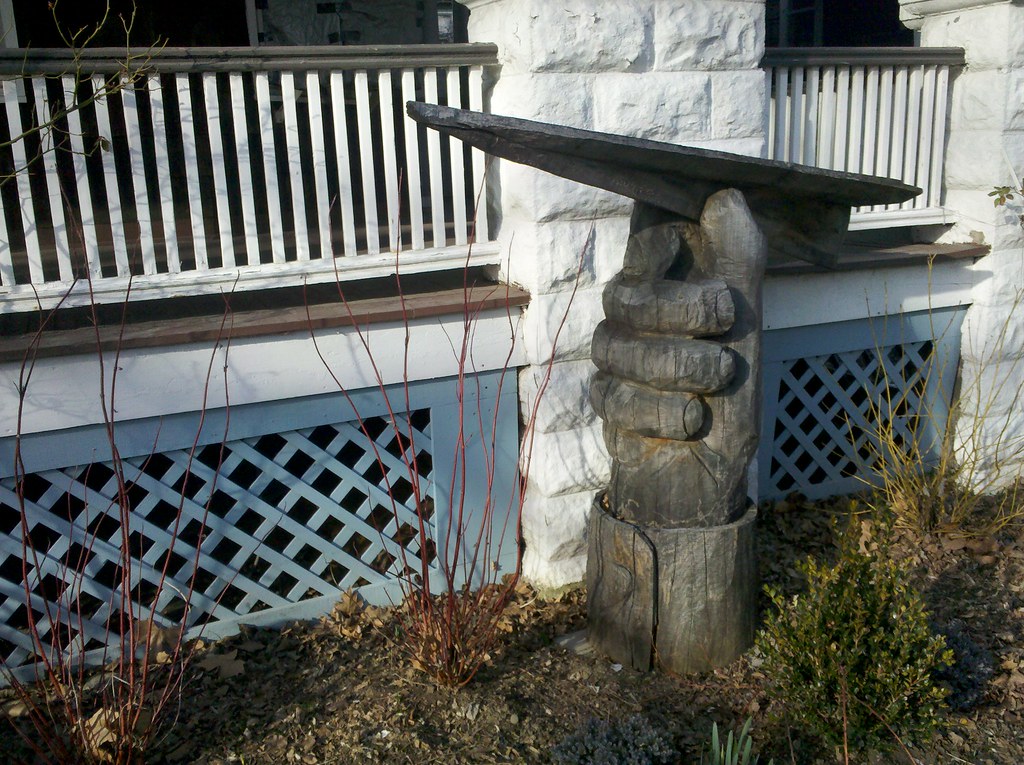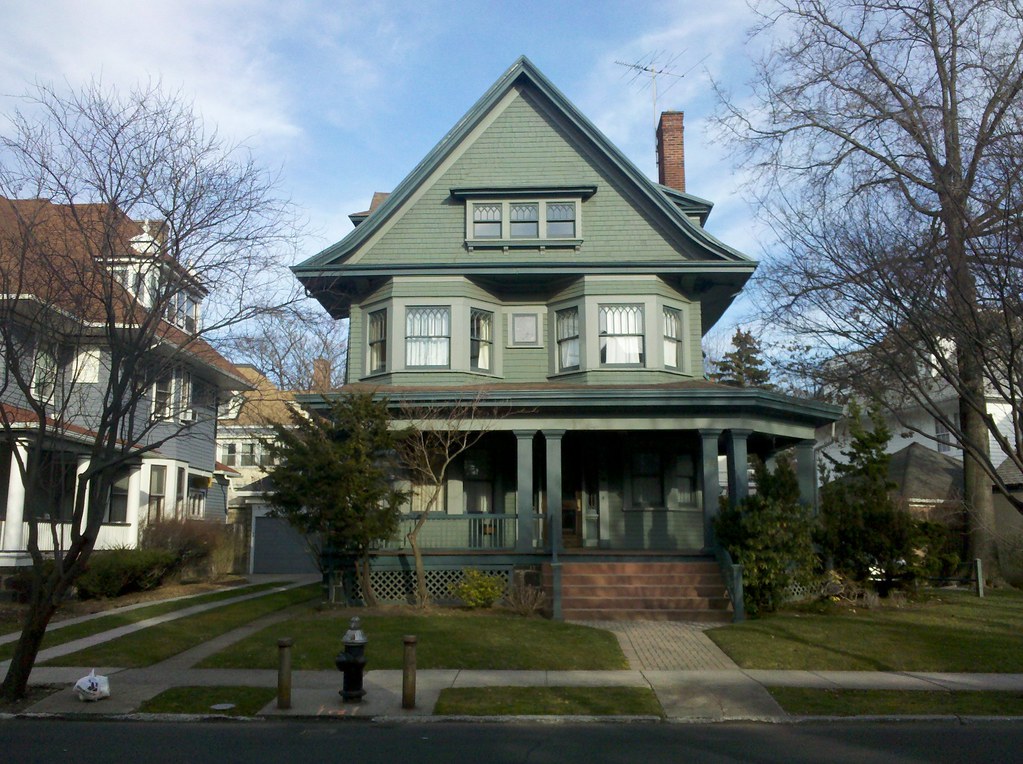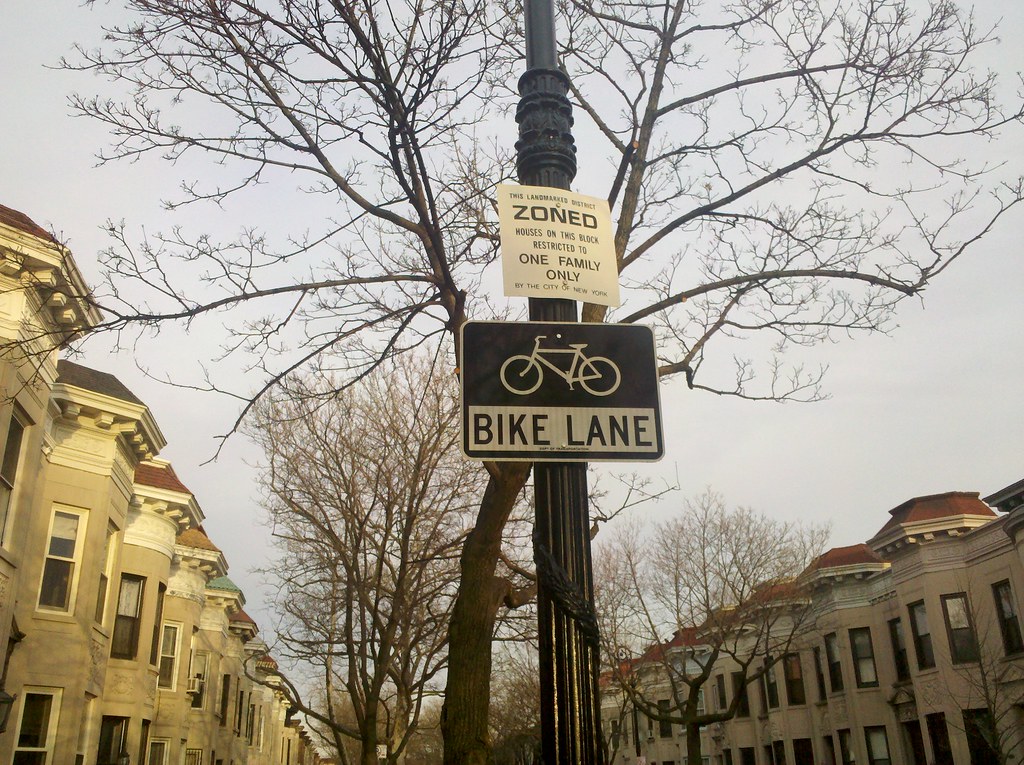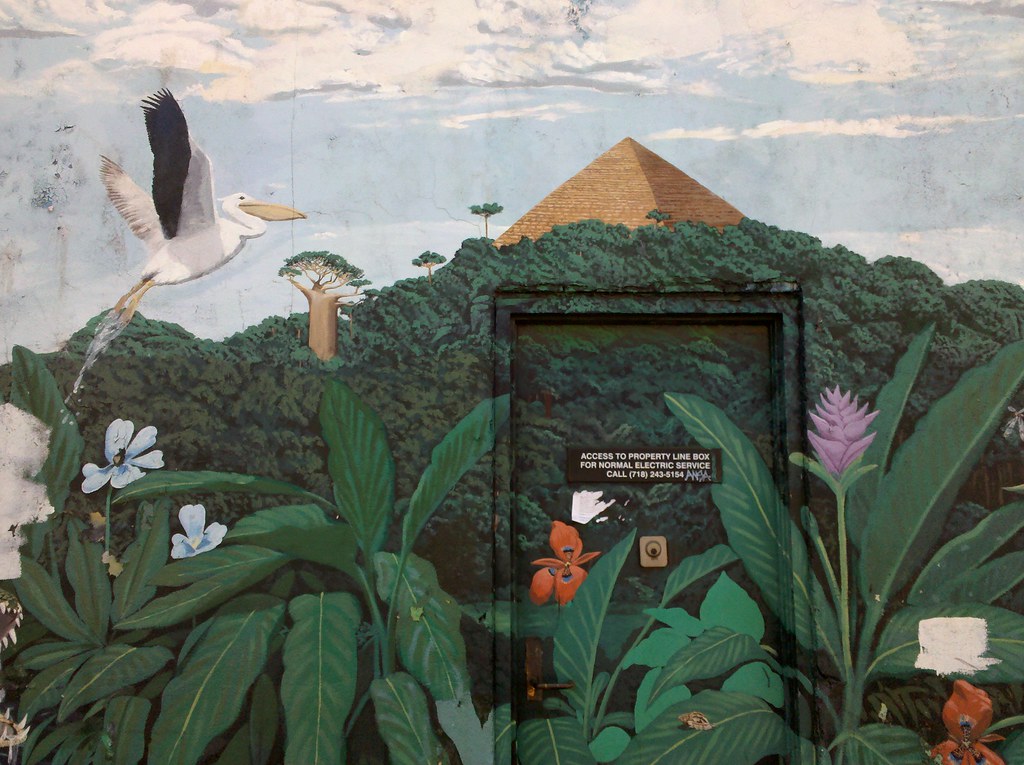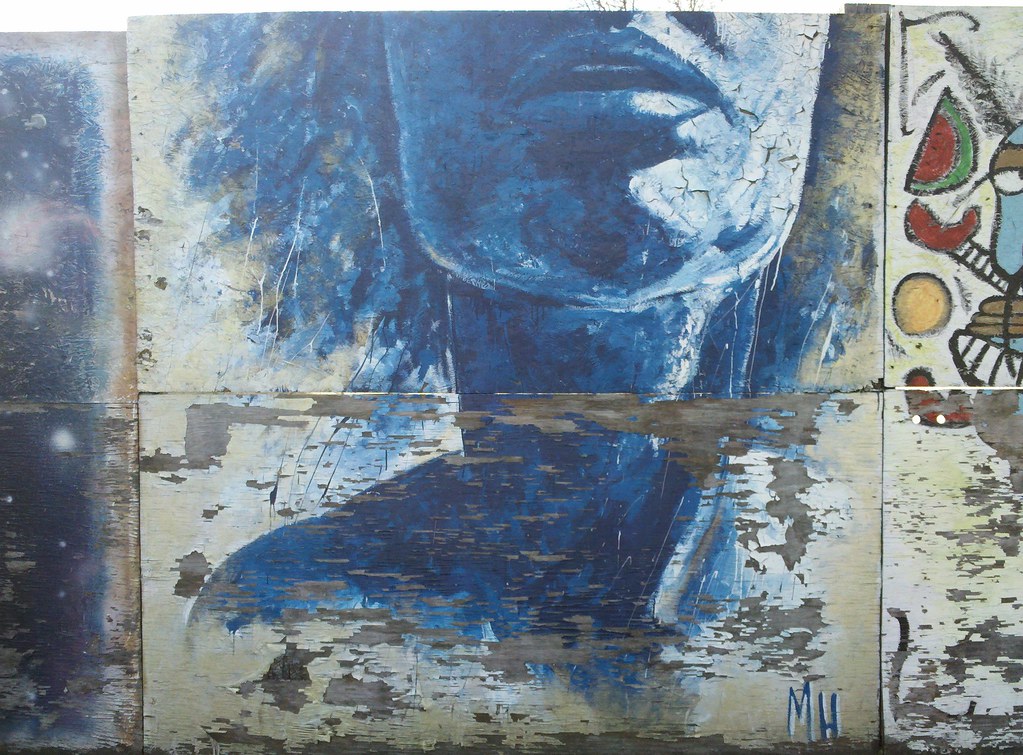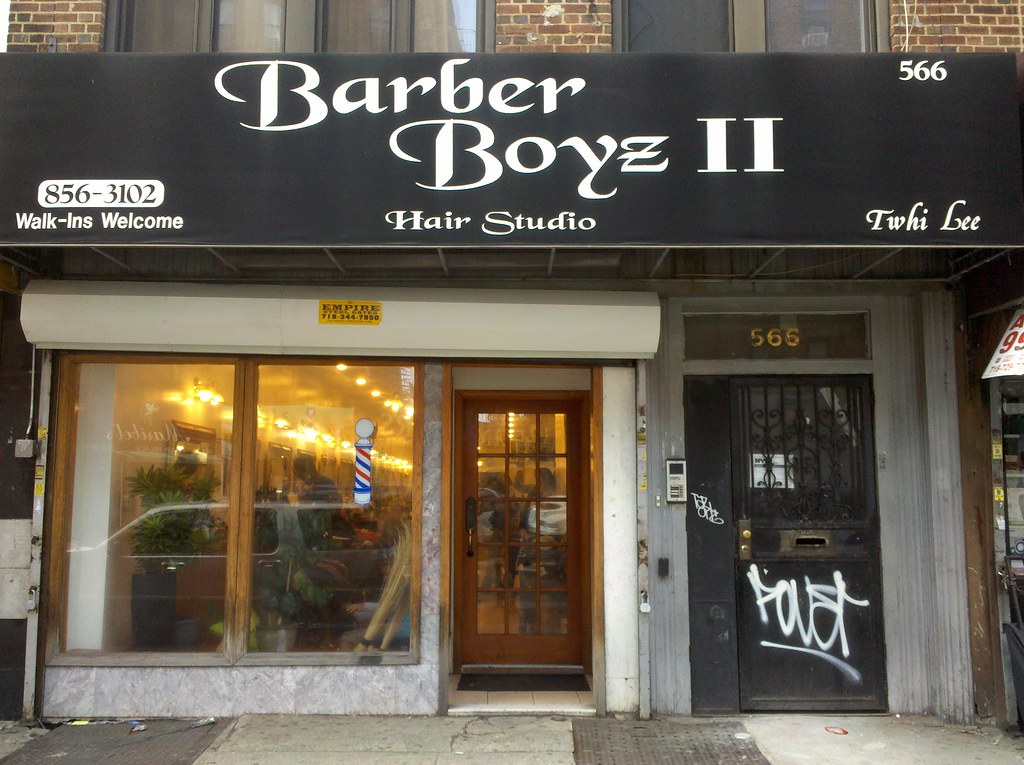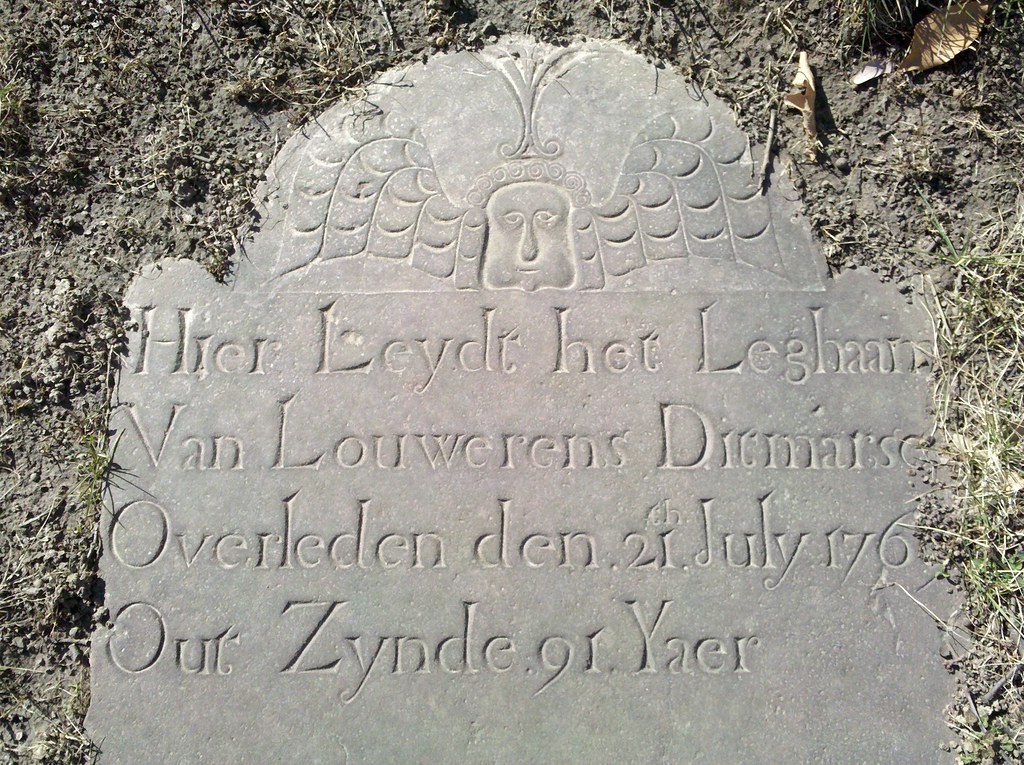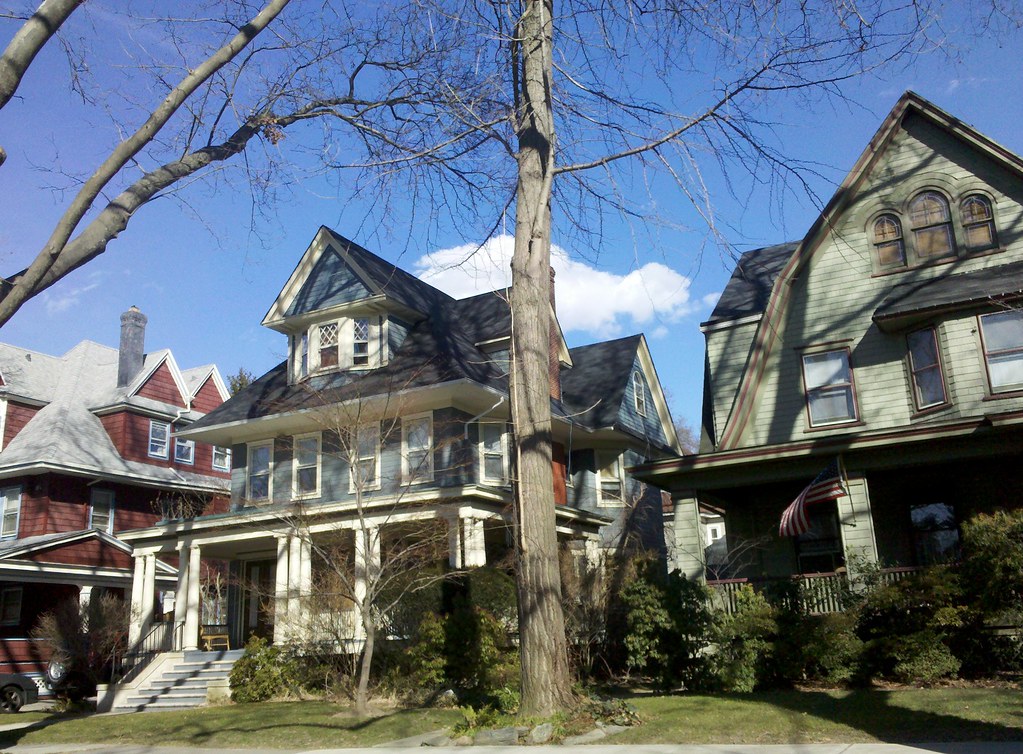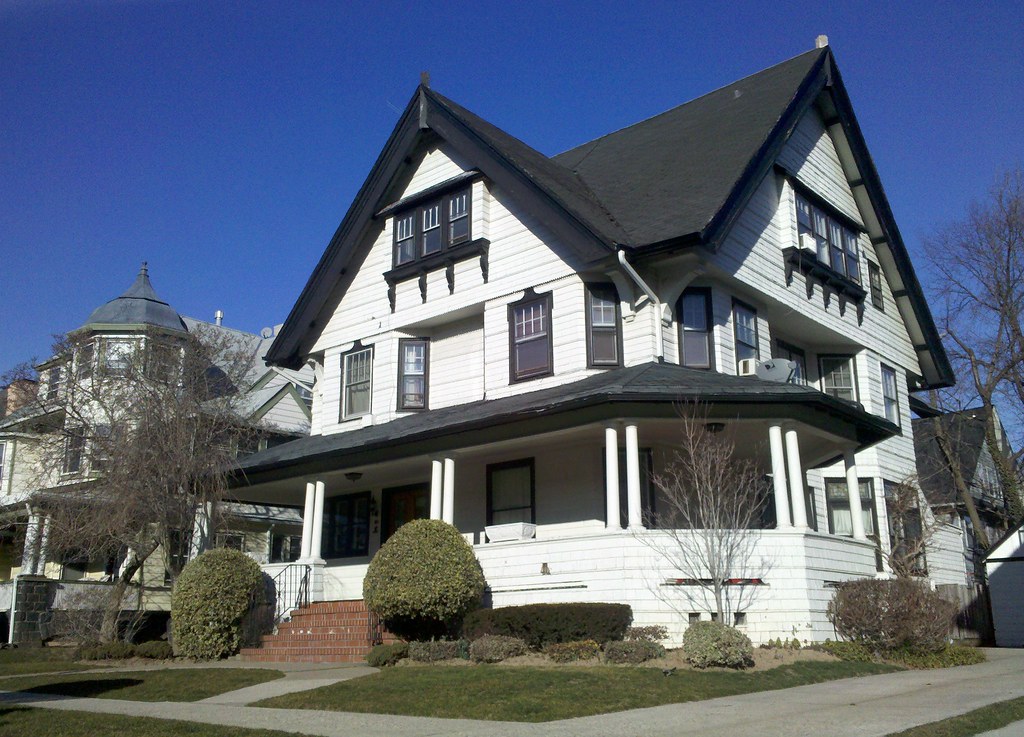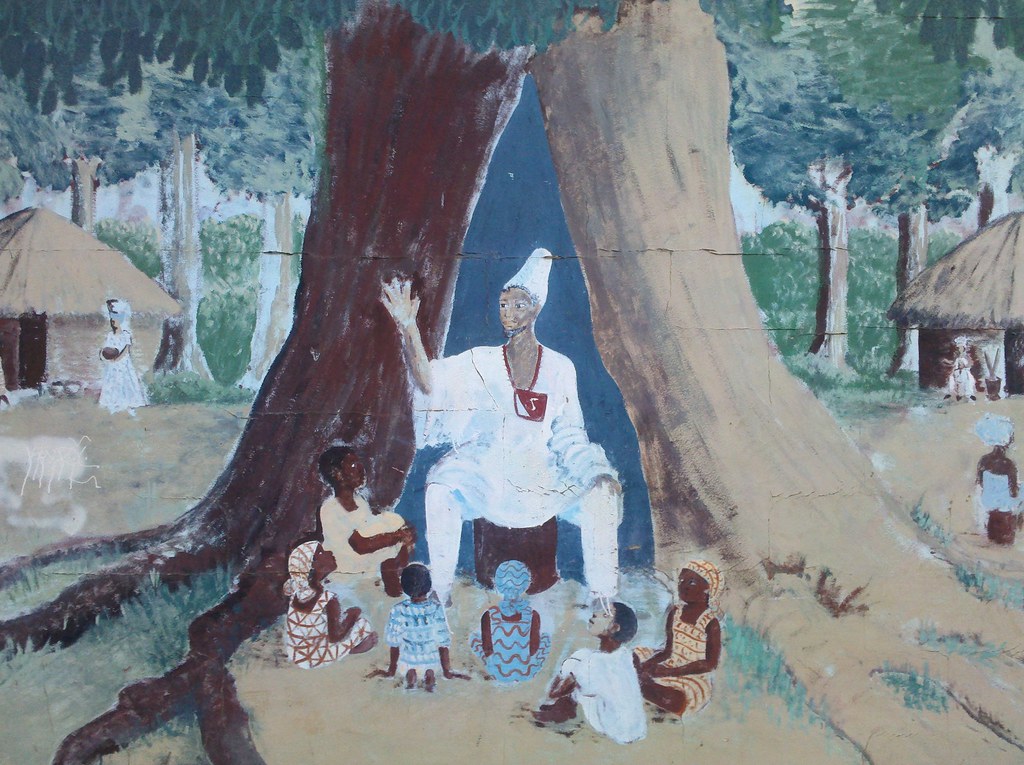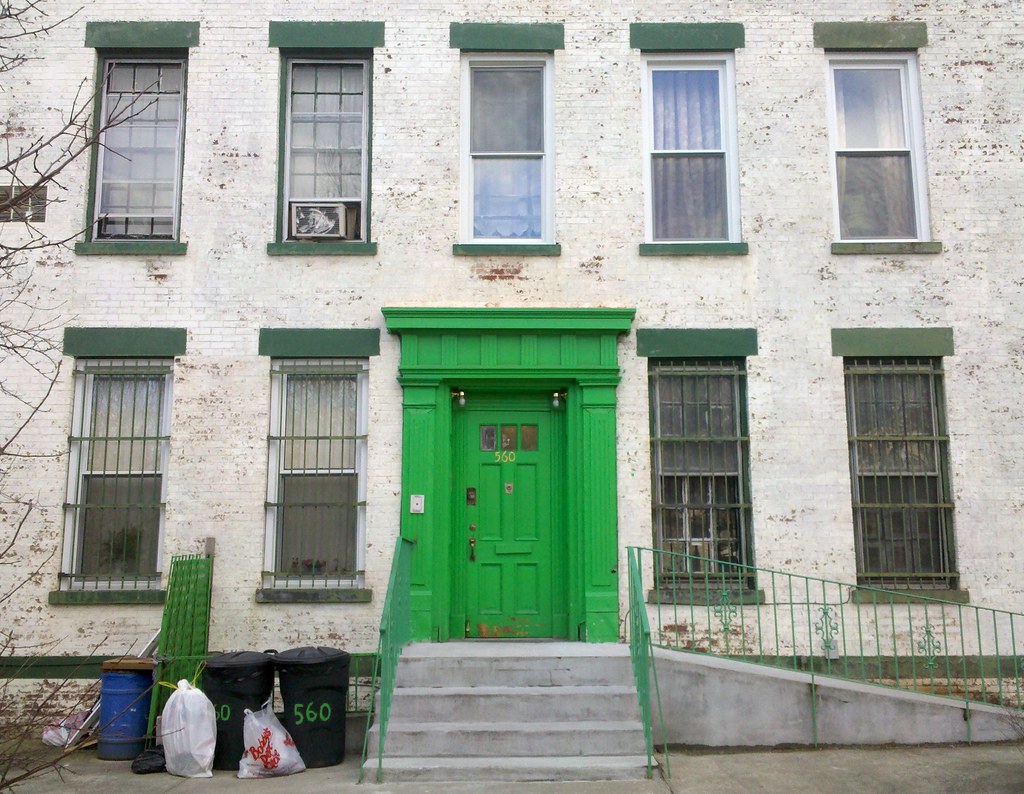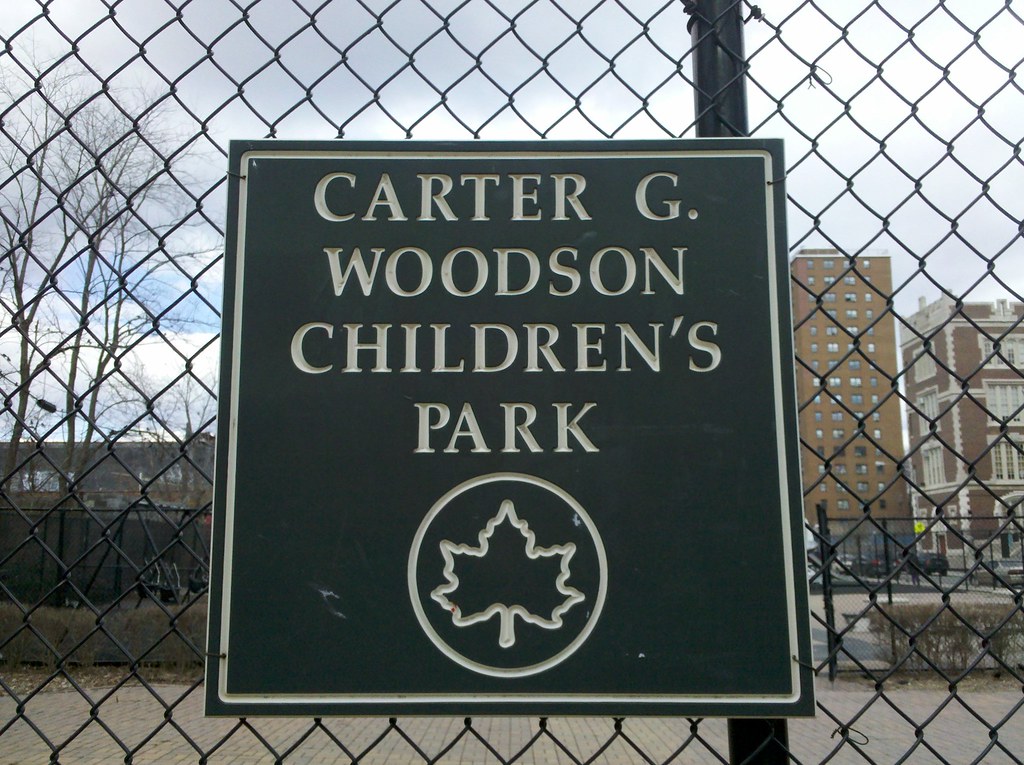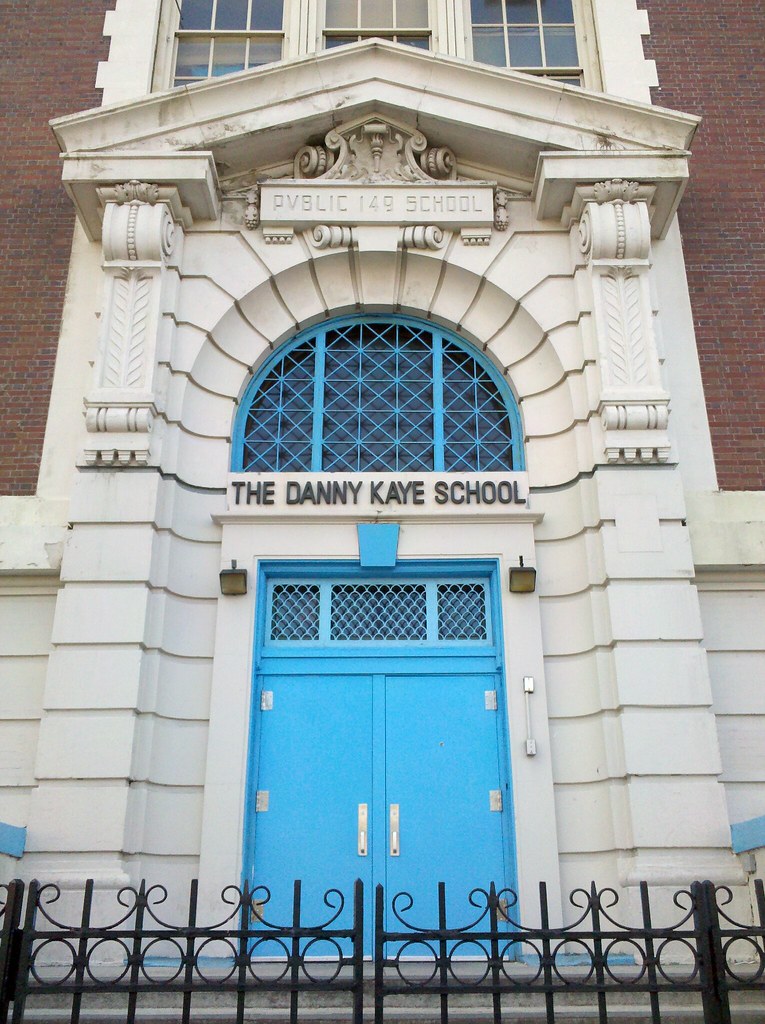
That's the colloquial name for this chunk of central Brooklyn, which was "in many respects . . . the first suburbs." This particular house is located in the neighborhood of Beverley Square East.
Funny note about the linked NY Times article: it mentions the hideous abbreviation "NoProPaSo" (North of Prospect Park South), which for years I had cited as the most heinous of the recent rash of shortened neighborhood nicknames. Turns out it was created as a joke, but the Times reporter failed to record that detail!
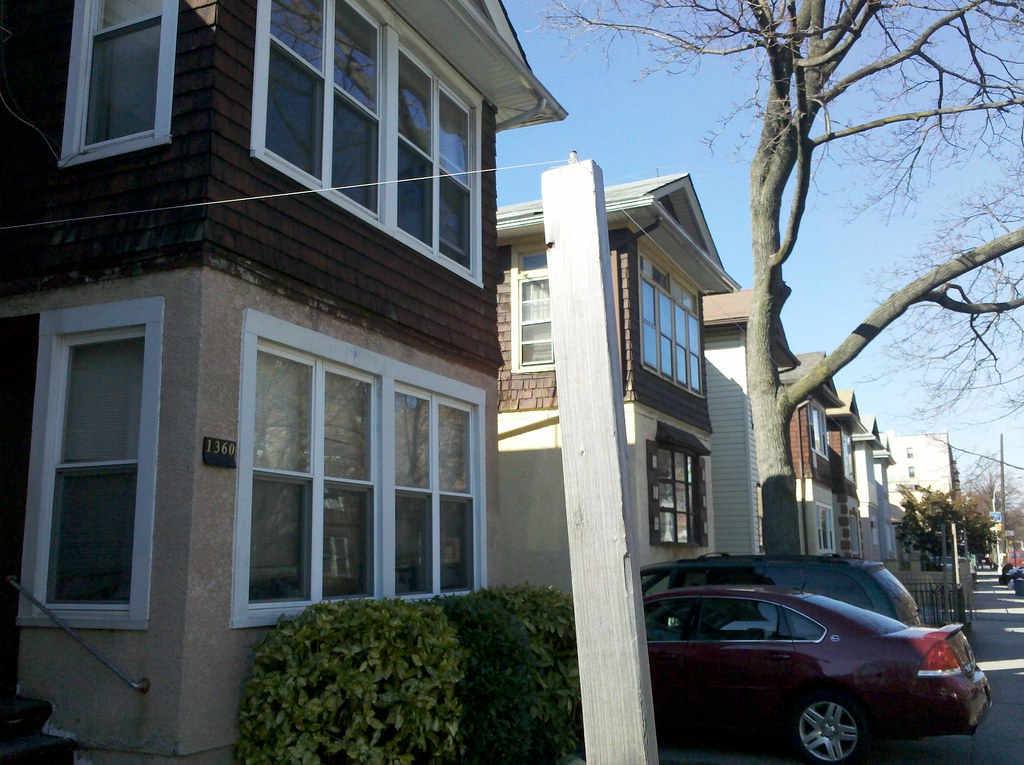
Unlike the extensive Manhattan Eruv, this one just encloses a few neighboring houses.

Located here on Waldorf Court and a block south on Wellington Court, these unusual traffic calming medians are rather unobtrusive.
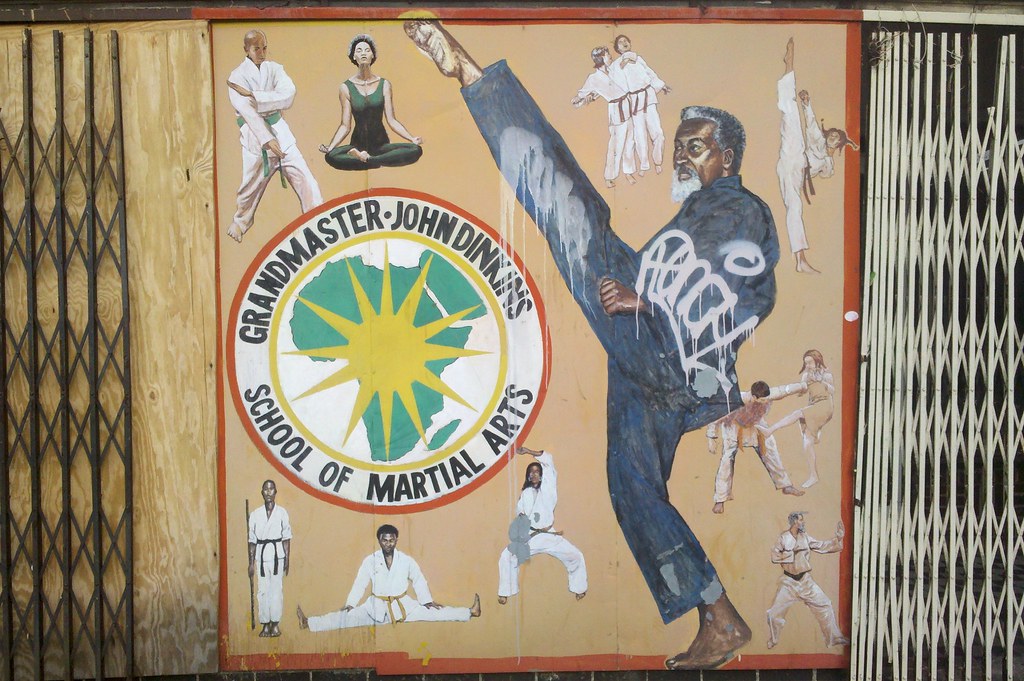
from the soaring foot of Grand Master John Dinkins.
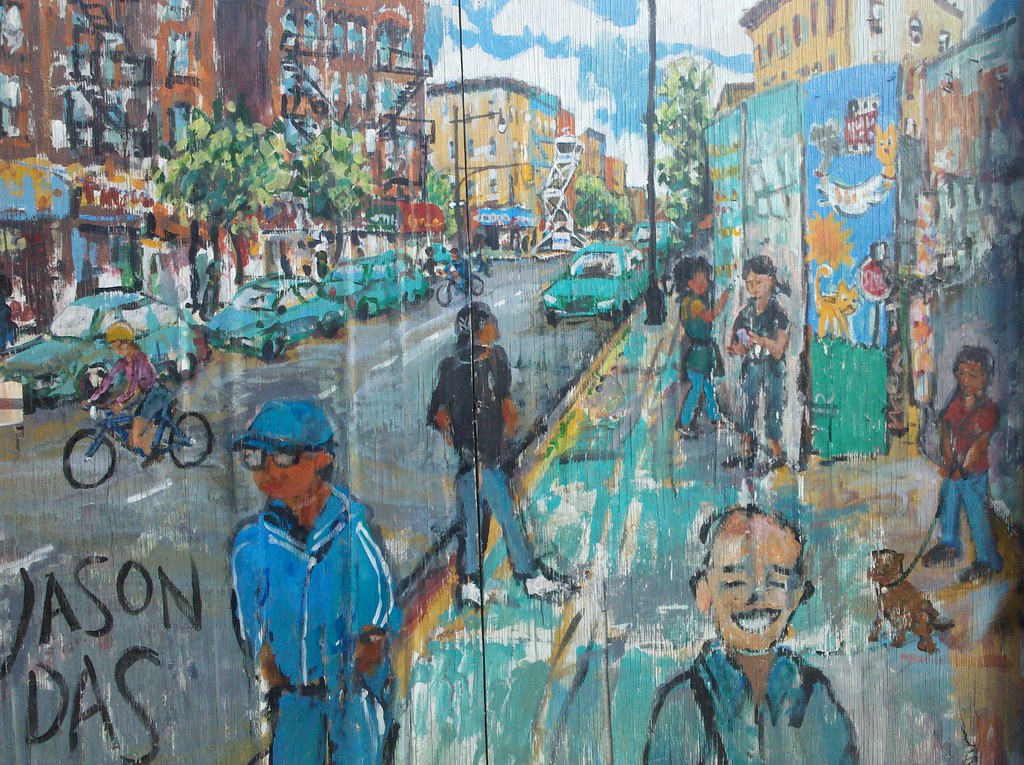
As depicted on a construction wall mural. You can see a SkyWatch tower in this mural (three in three days!). You can even see the construction wall in this mural. In fact, you can see this mural in this mural! (It's the one all the way to the right, next to the dog-and-cat panel.) The artist cut off the right side of the mural-within-the-mural, however, eliminating the need to paint an infinite regress. Check it all out on Street View.
UPDATE: This mural is even cooler than I thought!

Sort of!
Outlawed by the state in 1975, an exception for their use in NYC was granted after a 1990 lawsuit. Starting in 1992, and continuing for the next 16 years, the city repeatedly tried and failed to move beyond the testing phase of various toilet proposals. By 1994, after a mere two years, the NY Times was already fed up:
"The city's frustrated attempts to meet the basic human need for a safe, clean place to go to the bathroom exemplify how cumbersome governmental processes, flawed planning and a cacophony of competing interest groups can delay the achievement of a common-sense goal."
Finally, in 2008, it was all figured out. The first post-1975 permanent pay toilet was installed in Madison Square Park to much fanfare, with the promise that 19 more would soon be in place around the five boroughs. (Here's a review of that toilet, for those curious about the workings of an automated commode.)
However, by late 2010, there had only been one additional toilet installed (in Corona Plaza, Queens). But after more than a year of wrangling, work was finally underway on a third location, here at Grand Army Plaza in Brooklyn.
So now it's 2012, and we have a grand total of three pay toilets to show for two decades of bureaucratic maneuverings. (I assume there are still only three: the city's own website lists just the first two.)
Finally, it should be noted that these machines consume a monstrous 14 gallons of water per use! Perhaps it's for the best that they remain so few and far between.
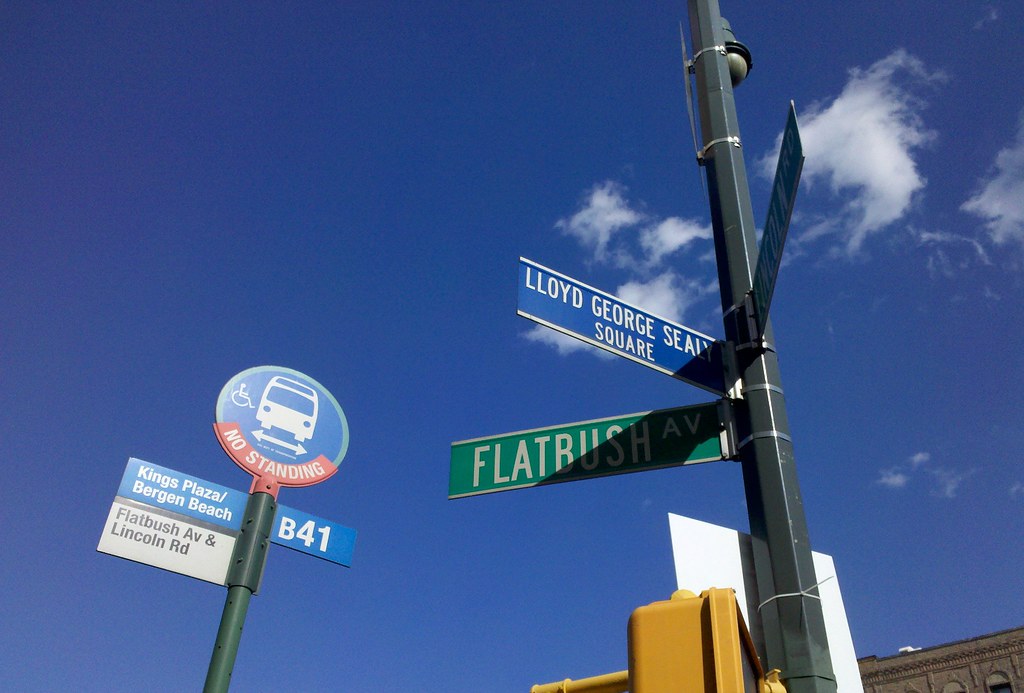
A policeman and a scholar. (Pardon the overly gushing tone of this link; it's the only writing of substance I can find about the man.)

This park is named after Umma (an Arabic word meaning "community"), a highly successful community group formed in 1978 to help fight crime in the neighborhood. A local blog recently published a lengthy interview with Ed Powell, one of the founders of Umma.

Founded in 1654 under the direction of everybody's favorite peg-legged, intolerant bastard (but then again, who wasn't in those days?) (these guys weren't!) (intolerant, that is, not peg-legged) (although odds are they weren't peg-legged either), Peter Stuyvesant.
The oldest legible stone here in the cemetery apparently dates to 1754; I saw several from that era (1760s and 1770s) during my brief stroll. While some of the markers are now too worn to be read, others have achieved unintelligibility simply by sinking into the ground over time, their recorded dates of death themselves becoming interred.
For an unusual take on this place, I'd recommend the beautiful photos and fevered narration of Mitch Waxman, who can generally be counted on for such things.
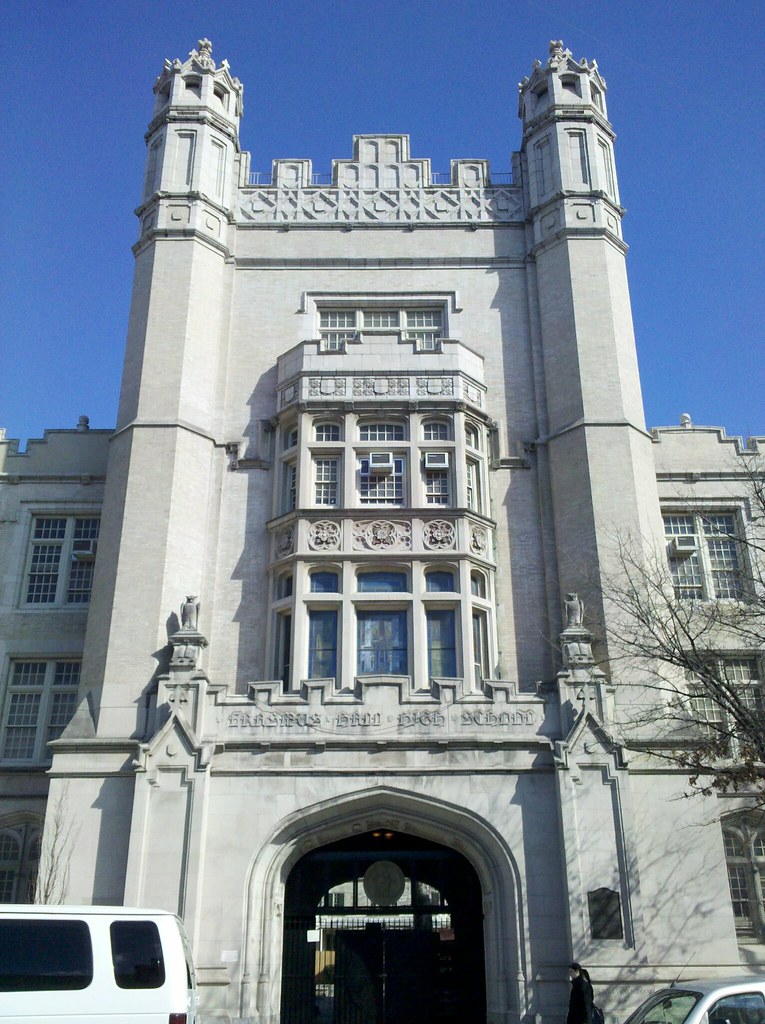
Erasmus was founded by Dutch settlers in 1786, and the original Academy building is still standing in the courtyard (you can just catch a glimpse of it through the gated entryway) of the grand, Gothic-style campus that was built after Erasmus was donated to the public school system. The building pictured here was the first part of that campus to be constructed, and it was opened in 1906.
If this photo looks familiar to you, it's because both schools were designed by Charles B.J. Snyder during his prolific tenure as NYC's Superintendent of School Buildings from 1891 to 1923. His lofty ideals for municipal architecture revolutionized the school system and "symbolized the commitment of the city to care for and even uplift its citizens", according to the NY Times.
(As you may recall, I passed by the backside of Erasmus on Bedford Avenue last month.)

He's memorializing all the people who died in the earthquake, fire, and famine of 1805!
About 30 feet to the right of this door, a bright red, wall-length mural boldly proclaims: "Everybody was born talented / So find your talent / And don't waste your talent". Mission accomplished.
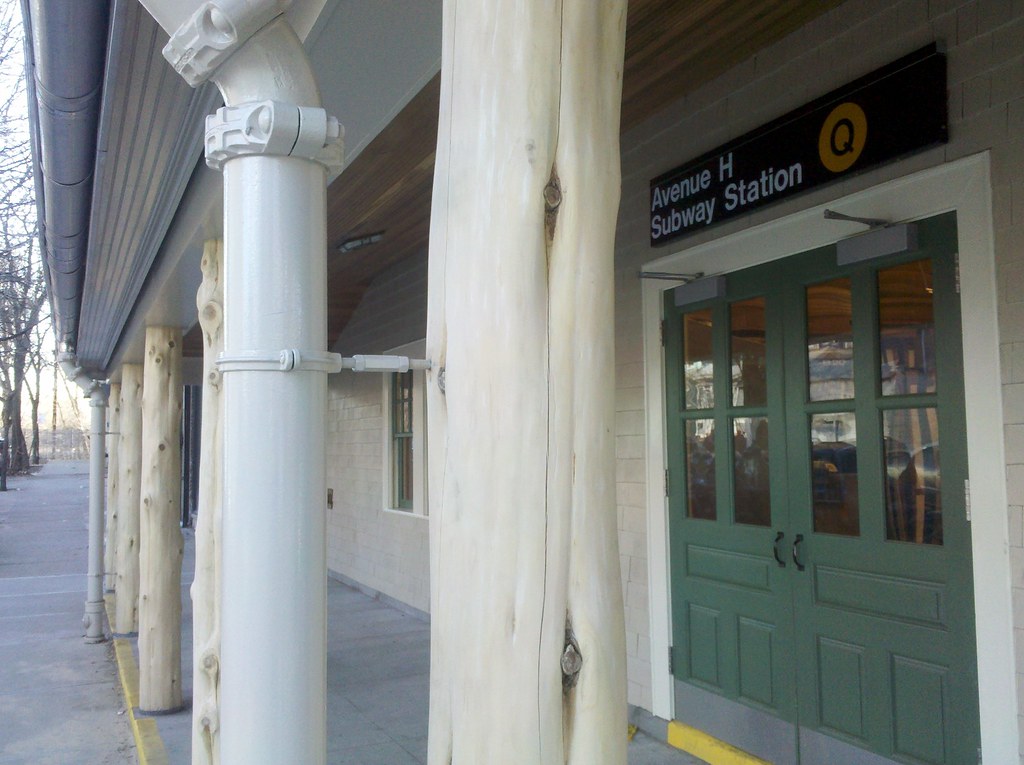
The Q train station at Avenue H was not originally built as a train station: it was a real estate office for T.B. Ackerson, one of the developers of Victorian Flatbush. Landmarked in 2004, it's one of the few remaining wood-frame station houses in the subway system. It is so quaint, in fact, that its porch roof is held up with honest-to-goodness log columns. Which, of course, raises the question: Why are there no rocking chairs??

I was surprised to find this battery of NYPD security cameras guarding the quiet terminus of a leafy dead-end street here in Victorian Flatbush. One resident who was out walking his dogs told me they were installed as a response to people hopping the fence and walking along the subway tracks to the nearby station (less than a block from the right edge of this photo), thus avoiding paying the fare. While that explanation didn't seem totally implausible, it also didn't pass the smell test: the two directional cameras were both pointed away from the area where people would be climbing over the fence. In fact, they seemed to be rather conspicuously monitoring a house on the left side of the street. Further research reveals the real reason those cameras are there: that house is occupied by the NYPD's highly decorated Chief of Department!

This must be the Brooklyn equivalent of MOMO's expansive tag of Manhattan.
Either that, or the guys working on the house down the block had a leaky can of paint.

This is one of two Cambodian Buddhist temples in NYC, the other being Wat Jotanaram in the Bronx. I was surprised to find this temple sitting at the end of a block of large Victorian houses; in fact, the temple itself resides in one of those houses. Take a look!
The two gentlemen on the right were standing outside when I passed by. We struck up a halting conversation built on their modest English and my nonexistent Khmer. They invited me inside to see the sanctuary and meet the temple's monk (the gentleman on the left, in case you couldn't tell). Before I knew it, the conversation had turned toward my singlehood; the idea of fixing me up with a Cambodian girl was proposed and roundly lauded by my new friends.
However, before I had a chance to unwittingly and irrevocably signal my matrimonial intentions with an absentminded gesture, like in some bad movie, the clock struck four: it was time to pray. For the next forty-five minutes, the five of us (there was one older woman, as well) sat on the floor in the same asymmetrical pose that the fellow on the right is holding in this picture (occasionally switching legs), with hands raised, palm-to-palm, at chest level. My companions sang what was essentially one continuous chant, which sounded something like this. Even for a total outsider, it was quite entrancing at times.
Before I left, they invited me to attend their three-day-long Khmer New Year's celebration in April. As it happens, I will be out of town for those very same three days. But hey, there's always next year — and I'll still be walking then, after all!

From a distance, I thought this was some kind of protest against the Screen Actors Guild. It is in fact part of State Senator Eric Adams's campaign against droopy drawers.
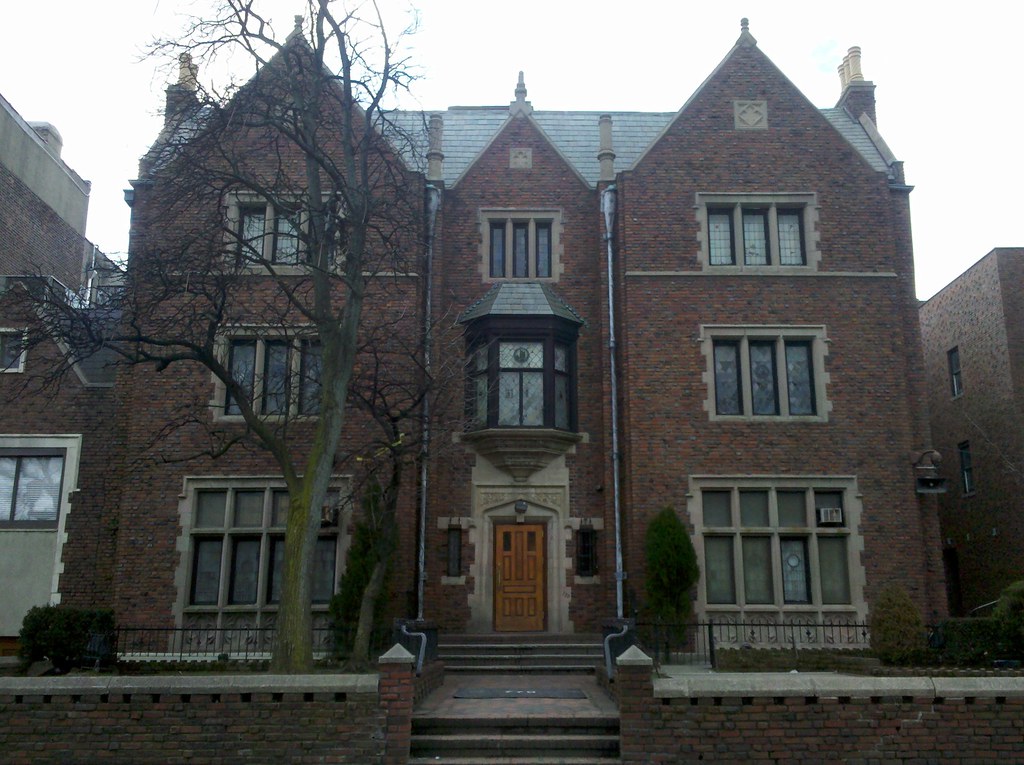
Located at 770 Eastern Parkway, this building is the headquarters of the Chabad-Lubavitch movement. It is of such significance to the organization that Lubavitchers around the world — from Italy to Australia to Israel — have built replicas of it.
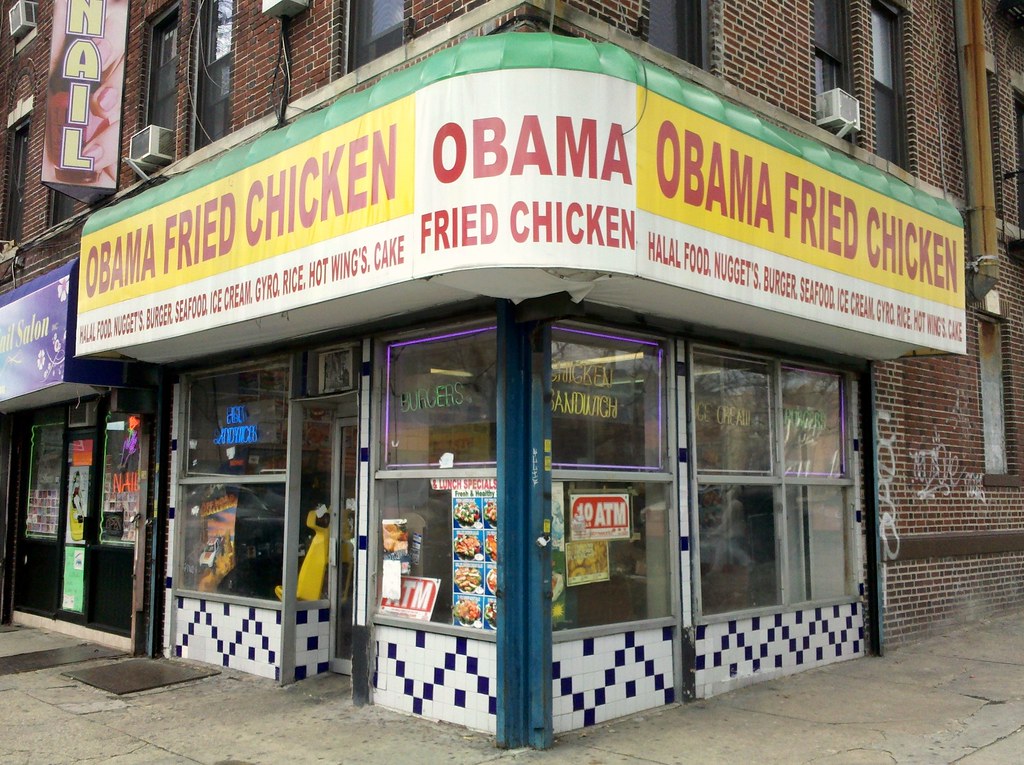
Continuing the proud tradition of presidential chicken, this establishment seems to have weathered the early criticism of its name change and was even featured in a Clipse music video (though its name was erased from the sign when the video aired on TV).
UPDATE: The only version of the video still available online is the one with the restaurant's name erased.
UPDATE: Obama Fried Chicken is a goner.

Honored by a 2010 legislative resolution in the State Senate, he has apparently been able to hold onto his church despite a parishioner fraudulently selling it to a developer.

but the seal at the top of the building, with its three sheaves of wheat that look like mushrooms, reminded me of something I'd seen before. I was a little confused by its presence here in New York, but then I reached the end of the block and found myself standing at Pennsylvania Avenue.

Built on the right-of-way of a former aqueduct (hence the name), this road has an exceedingly wide median. Here in Queens, just across the border from Brooklyn, there appears to be a park of some sort taking shape.
UPDATE: It's not a park; it's a bioretention facility with "the capacity to divert at least 200,000 gallons of stormwater that would otherwise flow into the combined sewer system–roughly 90% of the stormwater that accumulates within the drainage area during a moderate storm."



